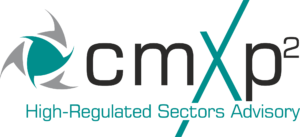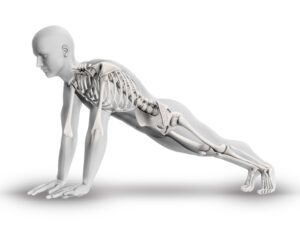The nutraceutical market in Asia is expected to grow at a compound annual growth rate (CAGR) of 9.5% between 2023 and 2027. This growth is primarily driven by rising health consciousness, a desire for healthier lifestyles, an increasing prevalence of chronic diseases such as obesity, diabetes, and cardiovascular conditions, and the rise in disposable incomes and a growing middle-class population (Source: Report Linker).
The market is divided into four main segments: functional foods, functional beverages, dietary supplements, and personal care products. Among these, functional foods are projected to hold the largest market share due to the increasing demand for food products that offer health benefits beyond basic nutrition (Source: Report Linker). Additionally, functional beverages containing botanical-based active ingredients are also anticipated to see increased demand (Source: Fortune Business Insights).
Given this growing demand, it is crucial for food and beverage companies to invest in innovation within the functional food and beverage sectors. A well-crafted innovation strategy is key to developing a truly beneficial product. This strategy should involve leveraging effective claims and communication messages to promote and boost product sales. However, many organizations face challenges in developing a successful innovation strategy.
Many research and development teams often become enthusiastic about a creative functional food or beverage idea and rush into product development. It is only after the product is developed that they begin reviewing claims, communication, and product costs. This reactive approach can lead to several issues, such as:
1. Insufficient Nutrient Levels for Nutrient Content and Nutrient Function Claims
Teams may realize that they may not have included enough of a key nutrient to make a “source of” claim in all target markets. This is likely to impact claim-ability and communication of product benefits to consumers.
For example, consider a beauty beverage containing vitamin C and collagen. In countries like Indonesia, Thailand, the Philippines, and Singapore, it is possible to claim, “Vitamin C aids in the formation of collagen tissue.” This claim is significant because collagen-linked function claims are not permitted in Southeast Asia. Therefore, combining two claims, such as “Source of vitamin C. Vitamin C aids in the formation of collagen tissue” and “Contains x mg of collagen,” is advisable. However, if the product does not maintain the required vitamin C level (to make a “source of” claim) by the end of its shelf life, making a vitamin C-linked function claim will be difficult. Moreover, while the vitamin C level may be adequate for some countries, it may not meet the regulatory requirements in others, as regulations vary across Asia.
To avoid these pitfalls:
-
Incorporate regulatory considerations and nutrient requirements for all target markets early in the innovation process.
This approach ensures the product meets all necessary standards across different markets, allowing for consistent and effective product claims.
-
Identify all potential claims and communication messages at the ideation or pre-concept stage.
Determine the key nutrients that will support these claims and communication messages. Create a chassis for the regulatory requirement to claim at least “source of nutrient” in each market and identify the maximum level needed for compliance in all markets.
A comprehensive list of on-pack claims, combined with scientifically substantiated messaging, can enhance product promotion efforts effectively. From a product development standpoint, it is of essence to include the right level of nutrients, to substantiate the making of credible claims.
2. Inadequate Ingredient Levels For Benefit Claims
Teams may also fail to add enough of an ingredient to substantiate the benefit claims on packaging or through different print and social media channels.
Three key considerations for ingredients:
i. Include sufficient amounts of the ingredient to make a credible content claim, such as “with x mg of ingredient.” The ingredient must remain at this level in the product, even at the end of its shelf life.
ii. Meet regulatory requirements for ingredient levels to make a function claim on packaging. For example, if you add Isomaltulose to the product, you can only claim “Isomaltulose provides longer-lasting energy compared to sucrose” if the product contains at least 15g of Isomaltulose per serving in Malaysia.
iii. Add ingredient levels that support the making of benefit claims in your communication messaging. For instance, new research has determined that a dosage of up to 6 grams of echinacea daily can help prevent or treat a cold. If you aim to use echinacea in a functional food or beverage to treat a common cold, consider adding 6g of echinacea per serving (or two servings, if you recommend an intake of two servings daily). This level allows you to emphasize the product’s benefit in print and social media posts, with credible scientific references.
3. High Product Cost
Novel ingredients are usually expensive. Adding the cost of other nutrients or ingredients with approved claims to uphold the overall product concept and positioning can make a functional food or beverage quite expensive. Hence, many product developers request the removal of some nutrients and or ingredients to meet mass-market price points, but this often dilutes the overall product positioning, adversely impacts product efficacy, and limits the ability to promote product benefits to consumers.
To achieve the best product and price point:
- Review the potential claims and communication list and remove only the nutrients or ingredients that do not add value to the overall concept. This approach may help trim down costs slightly, without compromising product integrity.
- Consider positioning your product as a “niche” offering and pricing it accordingly. With a higher selling price point, you won’t have to dilute the product and its benefits. Develop a product prototype and test potential price options with consumers at the concept stage to determine the optimal price point.
Patience is key with this approach, as you will likely start small. However, if your product is truly beneficial, consumers will likely feel the benefits and consume the product daily, boosting sales over time.
Yakult successfully transitioned from a niche probiotic health drink to mass market in many emerging markets; and you could consider employing an approach similar to theirs.
Yakult’s Strategy from Niche to Mass MarketYakult successfully transitioned from a niche health probiotic drink to a mass-market staple in many emerging markets by employing a multifaceted approach:
By strategically navigating these steps, Yakult was able to leverage economies of scale and adapt product offerings to meet local tastes and preferences, successfully establishing itself as a daily consumable for a wide consumer base. |
Summary
The nutraceutical market in Asia is rapidly growing, driven by increased health consciousness and the rising prevalence of chronic diseases. To capitalize on this growth, food and beverage companies must adopt innovative strategies that integrate regulatory considerations, and claims and communications to effectively communicate functional food and beverage benefits, early in the product development process. Ensuring adequate nutrient and ingredient levels for credible claims, and carefully balancing product cost and value is of essence. A niche positioning may be the best approach for new launches; but, with right consumer education, localized marketing, and a strong distribution network, organizations may eventually be able to transform niche product into a mass-market success.
If your organization needs support with defining product pipeline strategy and designing nutrition-centric functional food and beverages, and compiling scientifically-substantiated regulatory approved claims and communications get in touch.
About the Author
Yashna Harjani is co-head at cmXp2, where she co-leads the firm’s counsel in the food, nutraceutical, and supplement sectors. Bio.
About cmXp2
cmXp2 (“Xp2”) is a strategy advisory firm dedicated to supporting organizations operating in high-regulated sectors, specifically: Food & Nutrition, Agriculture & Agri-Food/Aquaculture, Life Sciences, and Global Banking & Markets, Institutional & Corporate Banking.
For organizations in these sectors, Xp2 helps them navigate complex and dynamic regulatory, legal and ethical parameters to define and execute strategies that generate meaningful value, shape opinions, enhance reputation and drive market impact. Our senior partners’ deep sector leadership expertise across these high-regulated sectors is well-placed to help clients succeed.
Xp2 is a division of the award-winning Corporate Media Services Pte Ltd (CorpMedia) that has over 32 years of experience. The firm is headquartered in Singapore and serves the Southeast Asia region.

3 Pickering Street | #02-36 Nankin Row | S048660 | Singapore
www.cmXp2.com | www.linkedin.com/company/cmxp2/








